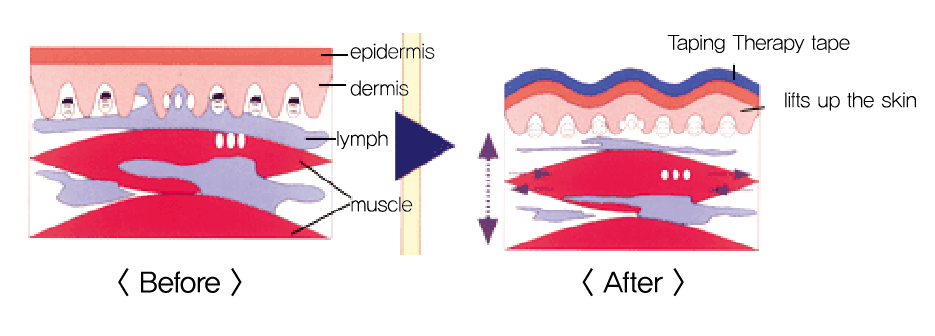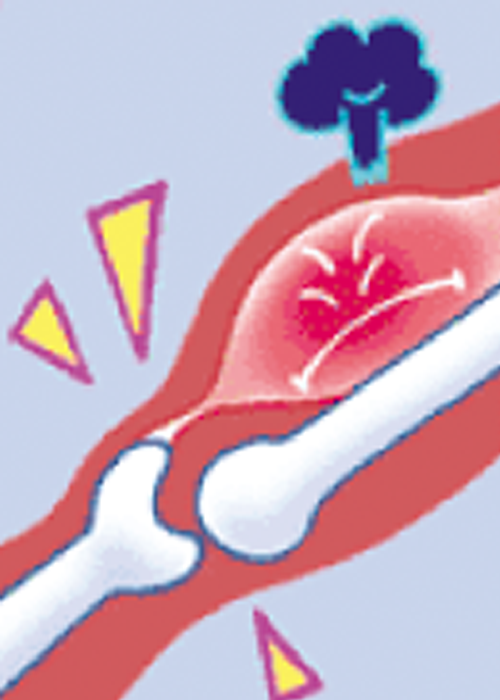
kinesiology taping
The Principle of Taping
The purpose of Taping is to prevent and protect joints and muscle injuries. It involves elastic tapes that do not contain gel-like pain relief patches and reinforce their function. When one has disorders of pain, Taping on the skin, muscle and fascia joints can restore basic human function. Taping is designed to be well ventilated, and balances the body with the muscle because of its excellent ventilation and soft adhesive strength durability. Also, the tape is elastic and its elasticity is similar to human muscle contraction which allows us to derive fundamental body reactions. Taping keeps the muscle from being overextended, and by lifting up the skin (about 10 micron) the space between the skin and muscle is broadened. At this moment the skin forms a spiral (wave) shape, flow of the blood and lymph is promoted between the fascial linings and the ability to propagate is fostered, which soothes pain. Also, motion function of the muscle is improved, allowing us to do physical efforts healthily. Thus, Taping Therapy has no side effects, is easy to perform, and overall works fast.


Pain
Leaving the pain causes the secondary damage

Corrects
Corrects the function of the muscle with taping

Circulation
Taping helps blood circulation by lifting up the skin

Misalignment
Tense muscle causes misaligned joints

Corrects
Prevents joint misalignment with tape
The Effect Of Taping

-
1. Corrects muscle functions and prevents further damages
Taping corrects the muscle function and prevents secondary damage. Because of the elasticity of the tape, the skin and muscle is stimulated so that the tensed up muscle goes back to its original state. When the muscle in pain is neglected alone, Surrounding muscles react to it, which can lead to secondary damage or elevated pain. Therefore, taping not only corrects the muscle function but also prevents secondary
-
2. Helps blood circulation (lymph and tissue fluid)
Because the tape litfs up the skin, stagnant tissue fluid or internal fluid in the topical part is discharged and the circulation of the blood or lymph is promoted, soothing pain.
-
3. Relieves the pain
By taping on the painful, it soothes pain neurologically
-
4. Helps joints to prevent misalignment
The muscle around the joint is often over-tensed and by taping it, the motion of the muscle goes back to itself, which prevents the joints from being dislocated.